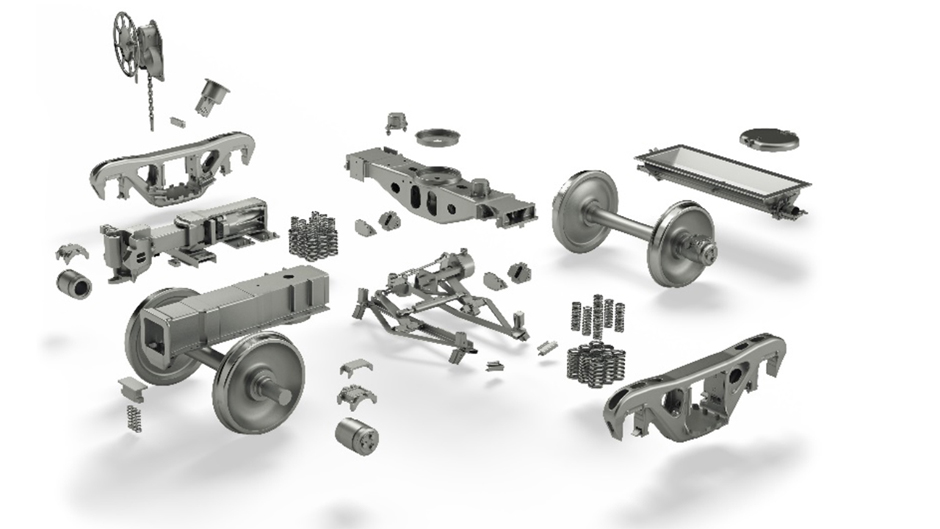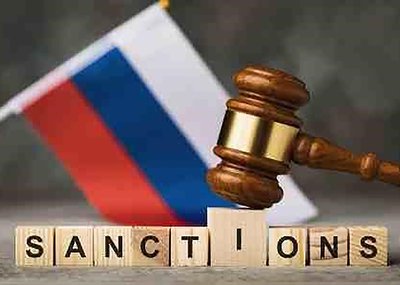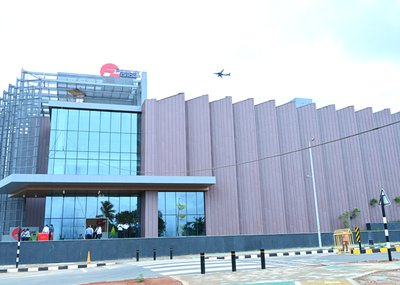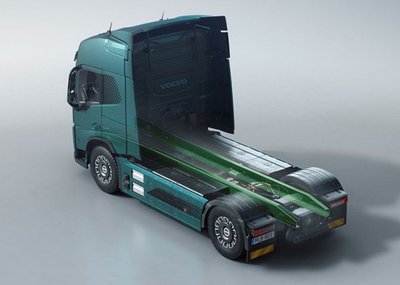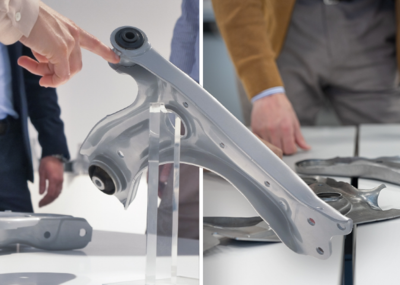North American Steel Foundries
As background, in 1980, there were 16 steel foundries in North America producing side frames, bolsters, couplers, yokes and knuckles for freight railcars and locomotives. Two producers were in Canada, two in Mexico, and the balance in the U.S. Virtually all casting supply came from North America.
Today, there are six foundries left:
- Ohio Castings, which has been idle since 2016.
- Bradken-Atchison produces locomotive truck frames, no railcar side frames or bolsters.
- McConway & Torley, Div. of Arcosa, focuses on the production of couplers, yokes and knuckles.
- Amsted Rail’s plants in Granite City, Ill. and Sahagun, Mexico are the two largest steel foundries in North America that produce side frames and bolsters, as well as couplers, yokes and knuckles.
- Blue Diamond produces coupler and draft gear components.
What happened to the North American steel casting supply base is a travesty. While there are many reasons for foundry closures, the two that caused the most damage were the notorious cyclicality of freight railcar demand, and globalization. In 1980, the elimination of incentive per diem, which reduced the investment value in freight cars, resulted in a huge swing in orders and deliveries throughout the ’80s, causing the first wave of many plant closures. At the same time, foreign castings began pouring in from Brazil and Japan, and soon thereafter, China. Customers used global sourcing as leverage to drive prices of steel castings down to unprofitable levels, which led to the continued closure of many domestic foundries into the ’90s and 2000s.
Amazingly though, despite the many closures, there remains plenty of North American capacity to support 60,000 annual carbuilds and maintain vital supply of service parts to the industry.
In addition to cyclicality and globalization, ever-tightening OSHA and EPA regulations contributed as well. It’s tough to reinvest in factories when you’re breaking even or losing money.
As a glimmer of hope for North American steel foundries serving the rail industry, it was announced in January 2021 that Delaware-based Brinco will begin producing side frames and bolsters at a former Chassix steel foundry plant in Bristol, Ind. The new business was approved for a bond of up to $40 million for the project
The AAR now lists nine approved non-North American suppliers of side frames and bolsters, and four approved non-North American suppliers of couplers, yokes and knuckles. As with wheels, China and Russia are the two largest exporters of cast steel products into the North American rail market, with India and Indonesia contributing a small amount as well.
Russia
The primary Russian manufacturer of side frames and bolsters is Tikhvin Freight Car Building. Tikhvin is closely aligned with United Wagon, a freight car builder aligned with the Russian government. With the advent of the Russia-Ukraine war, supply chains from Russia have been curtailed. Of importance, Russia represented almost 60-65% of the imported side frames and bolsters applied to North American railcars prior to the war.
China
Castings from China, particularly couplers, yokes and knuckles, are a very complicated story. China has embraced AAR style standards and specifications throughout its freight rail system. In 2004, coupler intellectual property was licensed to certain China-based manufacturers with the legally binding understanding that the technology would be for domestic use only. The China coupler manufacturers adhered to the MCSCM (Mechanical Committee for the Standard Coupler Manufacturers) agreement that prohibited the export of couplers into North and South America.
However, with a U.S.-based conduit to the market, in 2011 the first China-based manufacturer began exporting couplers to the U.S. Soon, Inner Mongolia First Machinery Group, one of the original technology license signatories, joined the export parade. Once Inner Mongolia subverted the license agreement, other China-based coupler manufacturers felt emboldened to begin selling couplers into North America. It should be noted that the Chinese companies do not sell directly, but are supplying through North American companies that do the actual importation and sales.
Unfair-Trade Ruling on Chinese Couplers
On March 15, 2022, the U.S, Department of Commerce (DOC) issued a Preliminary Affirmative Determination on illegal dumping of couplers from China, “Freight Rail Coupler Systems and Certain Components Thereof From the People’s Republic of China: Preliminary Affirmative Determination of Sales at Less-Than-Fair Value.” DOC said that it “preliminarily determines that freight rail coupler systems and certain components thereof (freight rail couplers) from the People’s Republic of China (China) are being, or are likely to be, sold in the United States at less-than-fair value (LTFV). On June 30, the imposition of punitive tariffs came under appeal. On July 11, the International Trade Commission found that the industry was “not materially harmed.” Who knows where this will ultimately go?
Chinese Steel Casting Manufacturers
Taking a closer look at the China steel foundries reveals the following: Inner Mongolia First Machinery Group produces tanks and vital tank componentry for the China People’s Liberation Army. Is this someone we want to rely on for such an important product as couplers?
From globalsecurity.org: “Inner Mongolia First Machinery Group Co., Ltd. (referred to as ‘Inner Mongolia One Machine’) is the country’s only main battle tank and 8×8 R&D and manufacturing base for wheeled tanks. Founded in 1954, the company is one of the 156 key construction projects during the National “First Five-Year Plan” period. It is the backbone enterprise of China Ordnance Industry Group, the only development and production base for wheeled armored vehicles in the country, and the largest equipment manufacturing in the Inner Mongolia Autonomous Region.”
Here’s some background on other Chinese suppliers of couplers, yokes, and knuckles:
Mudanjiang Jinyuan Draw Gear Limited Co., a division of QRRS (Qiqihar Railway Rolling Stock Co., Ltd.), is owned by CRRC. We know that CRRC (China Railway Way Rolling Stock Corp.), a Chinese SOE (state-owned enterprise), has ambitious plans to dominate global rail supply chains. From its website: “In December 2005, QRRS established the Mudanjiang Jinyuan Draw Gear Limited Company (short as Jinyuan Company) at the location of the original Mudanjiang Locomotives and Rolling Stock Company. In July 2007, as required by the integral reorganizing to become listed, the main business, asset and personnel of QRRS were collected and registered as Qiqihar Railway Rolling Stock Co., Ltd. (short as QRRS).”
Chongching Tongyao Casting & Forging Co. “focuses on the production of two series of products, such as couplers, bolsters and side frames for railway freight truck market at home and abroad, obtaining the CRRC and AAR certification. Chongqing Tongyao Casting & Forging Co., Ltd. was established in January 2011. In April 2018, it was successfully reorganized into a mixed-ownership enterprise controlled by state-owned enterprises.” (From the company website.)
Ultimately, the Chinese coupler manufacturers are targeting the North American market to deliberately displace North American manufacturers, while subverting licensing agreements. Combined with CRRC’s ambitions of global rail supply domination, China-based production of couplers, side frames and bolsters are important pieces of their arsenal. It is also important to understand that any supplier to the North American rail industry must be AAR-approved, which also entitles them to the latest specifications and standards.
India
Texmaco has the largest steel foundry in India, with an installed capacity of 30,000 tonnes per year (equivalent to about 9,000 carsets), manufacturing primarily railway castings. It holds a license from ASF-Keystone for manufacturing of Ride Control Bogies. Foundry facilities and quality systems are certified to International Quality Standards ISO 9001:2008 and AAR M-1003. India exports of side frames and bolsters into North America represent 15-18% of assignable imports.
Indonesia
From the P.T. Barata website: “As the leading foundry and manufacturing company in Indonesia, P.T. Barata Indonesia (Persero) has a foundry with large capacity reaching 12,800 tons/year and is capable of producing some of the best products. Among them, components for railways, mining, power plant and the agro industry, such as components for a sugar factory. Products from Barata are not only recognized by customers within the country, but also by customers from abroad. With an AAR certificate, Barata has been able to penetrate the export markets of the U.S. and Canada.”
Summary
We are now confronted with a smaller North American supply base and a risky global supply community that embraces aggressive tactics in pursuit of displacing North American rail suppliers. Yet, North American foundries still possess the ability to supply a 60,000-carbuild market. We allowed this to happen through years of globalization and wild market swings, driven by a keen focus on lowest price from near and abroad. The impact of this focus has been the demise of far too many domestic steel foundries.
The Russia-Ukraine war, combined with strained China trade relations and clogged supply chains, has highlighted the need for a strong domestic supply chain to support the North American rail industry. Also consider what happens when the other foreign markets recover. When their domestic demand increases, will they have the capacity to support North American demand?
Since the Staggers Rail Act of 1980, and more recently PSR, railroads have done, and will continue to do well. It’s imperative their North American supply industry remains strong for years to come. If you buy imported products, make certain to understand fully the potential ramifications of your decision. Above all, know who the original supplier really is.
Author’s Note: There are doubters of my motives to educate the rail industry on the importance of a strong North American supply chain, given my Amsted Rail roots. Steve Becker, who assisted me on this article, has spent his entire career in foundries, first at National Castings/ABC NACO, and then at Amsted Rail. I spent 16 years at Amsted Rail working side-by-side with Steve and witnessed firsthand the struggle to make high quality products in North America, profitably. Throughout our careers, we witnessed many foundry closures, and every one of them was gut wrenching, especially as more global foundries gained AAR approval. Steve and I also gained enormous insight into global rail suppliers by traveling hundreds of thousands of miles, identifying their strengths and weaknesses.
Source: www.railwayage.com

